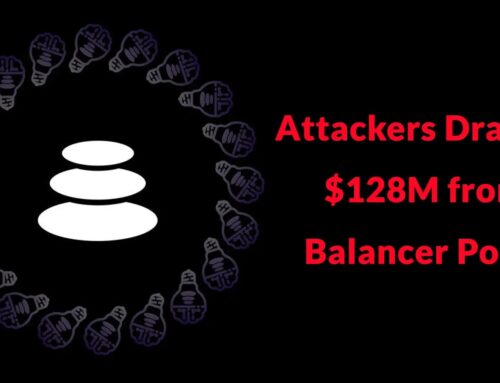
Kimsuky Hackers Via Weaponized LNK File Abuses GitHub for Malware Delivery
In a significant escalation of cyber warfare tactics, the North Korea-backed advanced persistent threat (APT) group Kimsuky has expanded its malicious operations. This latest campaign reveals a sophisticated shift, weaponizing legitimate cloud infrastructure, specifically GitHub repositories, for malware delivery and data exfiltration. This evolution demonstrates not only the group’s adaptability but also their increased proficiency in circumventing traditional security perimeters, highlighting a pressing concern for organizations leveraging cloud services.
Kimsuky’s Evolving Modus Operandi: Weaponized LNK Files and GitHub Abuse
The Kimsuky group, known for its persistent and targeted attacks, has refined its approach by incorporating weaponized LNK (shortcut) files. These seemingly innocuous files, when opened by an unsuspecting victim, trigger a chain of events leading to system compromise. What makes this particular campaign alarming is the integrated abuse of GitHub, a widely trusted platform for software development and collaboration.
- Initial Vector: The attack frequently commences with a spear-phishing email containing an attachment or a link that leads to the download of a weaponized LNK file. This file often masquerades as a legitimate document or application installer.
- Malware Delivery: Upon execution, the LNK file does not directly contain the malicious payload. Instead, it acts as a highly effective dropper, leveraging legitimate web services to fetch the next stage of the attack. In this campaign, Kimsuky has begun using GitHub repositories as a C2 (command and control) channel, hosting malware components or scripts that the LNK file then downloads. This allows the threat actors to bypass network filtering that might otherwise block direct connections to known malicious domains.
- Evasion Techniques: By hosting payloads on GitHub, Kimsuky leverages the high trust associated with the platform. Security solutions that white-list or lightly inspect traffic to commonly used development platforms may overlook these malicious downloads, effectively granting the attackers a privileged channel for malware distribution. Furthermore, GitHub’s robust infrastructure provides redundancy and makes it harder for security teams to quickly take down the malicious content.
- Data Exfiltration: Beyond malware delivery, Kimsuky is also using GitHub repositories for data exfiltration. Compromised systems might upload stolen data to private or public GitHub repositories controlled by the attackers, allowing them to discreetly collect sensitive information. This technique further blurs the lines between legitimate and malicious network traffic.
The Strategic Advantage of Cloud Abuse
Kimsuky’s shift towards abusing legitimate cloud infrastructure like GitHub represents a significant tactical advantage for the APT group:
- Enhanced Evasion: Organizations typically have robust security measures in place to detect and block traffic to known malicious domains. However, traffic to well-known cloud providers like GitHub is often deemed legitimate and subjected to less scrutiny. This allows Kimsuky to blend in with normal network traffic, making detection significantly harder.
- Increased Persistence: Leveraging cloud platforms provides built-in redundancy and availability, making their C2 infrastructure more resilient to takedowns. Even if one repository is identified and removed, the attackers can quickly pivot to another within the same trusted environment.
- Global Reach: Cloud platforms offer a global footprint, enabling attackers to target victims across different geographical locations without worrying about host infrastructure limitations or regional blockages.
- Cost-Effectiveness: Abusing free or relatively inexpensive legitimate cloud services reduces the operational costs associated with maintaining dedicated malicious infrastructure.
Remediation Actions and Proactive Defense
Organizations must adopt a proactive and multi-layered approach to defend against sophisticated attacks like those perpetrated by Kimsuky utilizing legitimate cloud services:
- Enhanced Endpoint Detection and Response (EDR): Deploy and configure EDR solutions that can detect anomalous process behavior, LNK file execution patterns, and outbound connections to legitimate services that exhibit unusual download or upload activity.
- Network Traffic Analysis: Implement deep packet inspection and network traffic analysis tools that can identify suspicious patterns of communication with trusted cloud services. Look for unusual file types being downloaded, large data exfiltration, or connections from unusual user agents when interacting with platforms like GitHub.
- User Awareness Training: Regularly educate employees about the dangers of spear-phishing, particularly attachments and links from unexpected sources. Emphasize the importance of verifying sender identities and exercising caution with LNK files or executable content.
- Least Privilege and Application Whitelisting: Enforce the principle of least privilege for user accounts and applications. Implement application whitelisting to prevent the execution of unauthorized programs and scripts, limiting the impact of LNK file execution.
- Proactive Threat Hunting: Security teams should actively hunt for indicators of compromise (IOCs) related to Kimsuky, paying particular attention to network traffic involving GitHub repositories and LNK file activity. Monitor for files downloaded from GitHub that exhibit suspicious behavior or initiate further network connections.
- Sandboxing and Isolation: Utilize sandboxing environments for analyzing suspicious attachments and links before users interact with them directly. This can help identify malicious payloads before they can impact endpoint systems.
- Secure Configuration of Cloud Services: While GitHub is being abused, ensure that your organization’s legitimate GitHub instances (and other cloud services) are securely configured, with strong access controls, multi-factor authentication (MFA), and regular auditing of logs.
Tools for Detection and Mitigation
| Tool Name | Purpose | Link |
|---|---|---|
| Endpoint Detection and Response (EDR) Solutions | Detects and responds to advanced threats on endpoints, including LNK file execution and suspicious network connections. | N/A (Vendor specific) |
| Network Intrusion Detection/Prevention Systems (NIDS/NIPS) | Monitors network traffic for malicious activity and can block suspicious connections. | N/A (Vendor specific) |
| Threat Intelligence Platforms (TIPs) | Provides up-to-date information on Kimsuky’s TTPs and IOCs. | N/A (Vendor specific) |
| Security Information and Event Management (SIEM) Systems | Aggregates and analyzes security logs from various sources to identify anomalies and potential threats. | N/A (Vendor specific) |
| Microsoft Sysmon | Monitors and logs system activity, including process creation, network connections, and file system changes, useful for detecting LNK file execution. | https://learn.microsoft.com/en-us/sysinternals/downloads/sysmon |
Conclusion: Adapting to the Evolving Threat Landscape
The Kimsuky group’s adoption of weaponized LNK files and the strategic abuse of GitHub underscores a critical trend in the cybersecurity landscape: threat actors are increasingly leveraging legitimate infrastructure to mask their malicious activities. This approach aims to circumvent traditional security measures that primarily focus on blocking known bad entities. Organizations must evolve their defense strategies to incorporate deep behavioral analysis, robust network traffic inspection, and comprehensive user education. Staying ahead requires not just identifying threats but understanding the evolving methodologies of sophisticated adversaries like Kimsuky, ensuring resilience against persistent and adaptive cyber campaigns.





